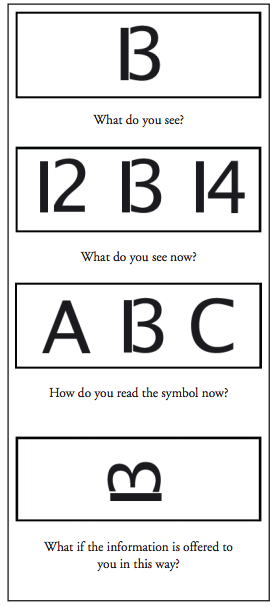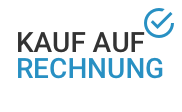Metaphors! Interaction
Working with interaction metaphors
Based mainly on systemic-constructivist thought and solution oriented models such as Ericksonian hypnotherapy and NLP (Neuro-Linguistic Programming), the author has developed an application-oriented concept for the use of interaction metaphors in team and organizational coaching.
Interaction metaphors: A definition.
A story from Persia: The mullah, a preacher, was known around the village for his magical ability to heal people. One day, he was seated in front of his house when a travelling merchant came by and said to him: „Great mullah, please help me, I am in pain! All year long, I travel from village to village with my donkey, offering my goods for sale and earning my daily bread. But I am unhappy, because I seldom get to see my wife and children and miss them very much. When I return home, I cannot get enough of them and swear to myself to never leave them again. But that is just an illusion, because I must go out travelling and selling my goods again. But when I do, I count the days until I hold them in my arms again.“ Without saying a word, the mullah took a jug filled with sweet nuts and offered them to the travelling merchant. Sinking his hand deep into the jug, the merchant greedily tried to take as many nuts as he could into his hand. But when he tried to pull his full hand out again, it would not fit through the narrow neck of the jug. He tried and tried, but the more violently he pulled to free himself, the more painfully his hand became stuck. He looked at the mullah for help. The mullah nodded knowingly and asked him: „Do you want to free yourself from the pain?“ The merchant begged: „Oh yes, please help me, hurry!“ The mullah replied: „Put your hand back to the bottom of the jug, open it, and let go of all the nuts!“ The merchant did as he was told. He let go of the nuts and pulled out his freed hand. „But what about the good nuts?“ he asked, because he had hoped for their sweet taste in his mouth. Smiling wisely, the mullah took the full jug, turned it around and, one by one, poured the nuts into the merchant’s opened hands. The merchant was confused. „Are you a magician?“ he asked, to which the mullah replied: „No, but I have learned that if you keep a balance between holding on and letting go, you will have more of both in the end!“ With his head held high and a satisfied smile on his lips, the merchant took his donkey and travelled on.
Interaction metaphors „translate“ one specific situation to another level. They address all the senses of the person involved. In terms of hypnotherapy, they trigger a transderivational search process. This means that individuals look for the personal meaning of the metaphor, based on their own models of reality. The structure of the metaphor defines the structure of the search process. All interaction metaphors are invitations to change one’s point of view. Like a new reality filter, they offer new ways of seeing, hearing, and feeling. The main point is that by being involved in a metaphorical situation which is isomorphic to a realworld problem, each individual extracts the meaning from the interaction - and the solution - which makes the most sense to him or her.
The mullah knew this and used an interaction metaphor to allow the merchant to change his logic from „either/or“ to „not only/but also.“
In this sense, many of the classical, experience-based activities like ...Spider Web, The Blindfolded Rope Square, etc., are interaction metaphors. METALOG® training tools (www.metalog.de) offers you a range of recently developed and improved interaction metaphors. These scenarios for learning, unassuming at fi rst sight, give you clear advantages: They can be used very fl exibly, and are also suitable for indoor use. Additionally, they facilitate the group rapport and help prepare the participants for larger activities and projects.
What if they refuse?
During in-house coaching for businesses, trainers are often faced with groups which do not react to the use of interaction metaphors in the way the trainer or coach had intended. „Unfortunately, the participants were unable to truly engage in the activities, although they would have gained so much from them,“ and „The group rejected the activity,“ are frequently heard complaints. Situations like these place the trainer in a diffi cult position. Not only is one’s personal feeling of comfort diminished, the success of the group is affected too. From a systemic-constructivist point of view, „rejection of an activity“ is merely a description from a personal perspective. But since any interaction between group and trainer is a circular process it must be described as one. And since humans always tend to have reasons for their behaviour, „rejection“ can perhaps be better described thus: „The activities offered to the group by the trainer apparently did not make enough sense to the participants at the time. They reacted in a sensible way by rejecting the offer.“
Therefore, in order to motivate a group to participate actively in an experiential learning scenario, it is important that needs like „We want to be heard!“ or questions such as „Why are we doing this?“ are acknowledged and catered to fi rst. These needs may be signals of a strong group desire for self-organization and self-reliance. As such, they signal an important resource for the further training process. Rejection by the group, in this sense, could mean: „Right now, our needs are different from what you’re offering us!“ or „I need more information about what else is going to happen today.“ It is essential for a trainer to include adequate „product information“ when introducing a new experiential learning activity. Offering the group an appropriate frame of reference is a very important step towards this goal.
It all starts with the frame of reference
A systemic-constructivist thought experiment: To illustrate the importance of choosing the „right“ frame of reference, here’s an interaction metaphor for you. To make it work, all you need to do to is agree to follow a few really simple rules. OK? Good. Let’s begin by covering all of the following images with a sheet of paper. Slide the paper downwards to reveal the top image. Write down your answer to the question. Continue with the other pictures, revealing one at a time. Ready? Let’s go!
The making of meaning
If you have done the experiment in the way I suggested, you have experienced the impact of frames of reference on your own subjective perception of reality. In the fi rst image, your frame of reference only consisted in the blank sheet of paper, which might seem not much of a frame of reference at all. (The way it is printed lets you know you were holding the images the right way, not, say, upside down. Strictly speaking, you did have one more; this article! What you have read so far probably made you anticipate some mind-bending in this activity.) In the second image, you will most likely have read www.metalog.de lernen verändern bewegt the symbol as „13“, and in picture number three as „B“. What meaning did your mind provide for number four?
The meaning of a message lies in what the receiver makes of it
If you chose to ignore the rules I gave you, or if you interpreted them in a way that suited you better, you have experienced an additional phenomenon: the selforganizing force of autonomous systems. You (i.e., the autonomous system) may have chosen to memorize your answers instead of writing them down, or to start with image number three, or you may even have declined my invitation to participate in the experiment and read right on. Whatever your choice, you surely had a reason to do as you chose to do. It just proves that frames of reference are invitations with no guarantee that they will be accepted. However, the more sense they make to the person receiving the message, and the better the contact between sender and receiver, all the more likely they are to be accepted. In any case, it is the receiver who gives meaning to a message according to his or her map of the world. This idea - that we create „reality“ through frames of reference - also applies to experiential learning. It soon becomes clear that we all are constantly in a process of adding meaning to data. All activities offered to the group need to be charged with meaning initially. Any specific meanings we provide as trainers focusses the participants’ perception and thus guides their experience. Therefore, the perception of the various activities and the event as a whole depends to a very large extent on the frame, or stage, which the trainer sets for them. I may introduce the same activity as a „game“ to one group, while calling it an „interactive experiential project“ in another group if I feel it makes more sense for that particular group. The generalizations derived from experience will be different each time (see Heckmair: „No more games“).
Frames of reference for experience-orientated learning should include the following:
Pacing:
An appreciative manner of connecting with the thoughts and feelings of participants and the entire group. The group’s needs should be met, and every person’s subjective point of view should be accepted without reservation. The coach should be careful not to take sides to avoid the isolation of certain individuals or parts of the group
Transparency and goals:
Knowing what will happen creates a feeling of safety within the group.
States:
It is useful for the learning process to evoke states like curiosity, excitement, fun, etc.
Changing frames or „new glasses“
As trainer, you should foster the expectations within the group that allow participants to really engage in the exercise and gain the fullest possible benefit from it. When designing frames of reference, the trainer is a kind of „reality optometrist“. Good frames of reference, in this sense, are not necessarily limited to the introductory words. For example, an interaction metaphor may itself provide an adequate frame. What follows is a real-life example of working with interaction metaphors which I took from working with a team of IT professionals.
An interaction metaphor as a frame of reference for team building: The bicycle method
Stable, appreciative contact with the group is the basis for getting anything done in a workshop or seminar. Every group member wishes to be noticed and recognized. The emotional risk level, i.e. the amount of social risk individuals are willing to take, must be identified and regarded. Also, it is easier for people to allow themselves to actively commit themselves to carrying out an unusual task if the experience makes sense to them. Take, for example, the group of IT specialists I mentioned earlier: What sense could they find in lifting each other through the holes of an oversized spider web? We, of course, do know that they would understand, that they would have plenty of emotional „communication material“ - if only they had already been through that experience as a team... But we are not there yet! For now, they are still seated in a semicircle, and although most have taken off their ties, their shirts are still buttoned up all the way. Which approach, specifically, can a trainer take to “Reality-optician” www.metalog.de lernen verändern bewegt connect with this group and to increase the commitment level of everyone involved? How do you get in touch?
The group
The purpose of this activity is to establish a communicative connection with and among an international team of IT professionals and to start them off with a workshop which will include several interactive metaphors, especially „low“ events. As regards content, the activity aims to create group synergy and foster a culture of team work. All participants had been telephoned in advance, and some had mentioned personal issues within the team. After a short round of small talk, the team members take their seats, full of anticipation.
Focussing the unexpected
The trainer draws a bicycle on the flip chart and explains: „We are going to use this day to do some practice-oriented work together. To start the day, and to explain my method to you, I’m inviting you to do a little thought experiment. Imagine this bicycle standing right in front of you, in this room. One of you is holding it by the handlebars so it will not fall over. It can still move forward and backward. The pedals are upright, so one is pointing straight up, and the other is pointing straight down. The one pointing down is facing your way. Now imagine me tying a piece of rope to that pedal and pulling on it, parallel to the ground and towards the rear of the bicycle.“ The trainer adds a rope to his flip chart image.
An initial invitation to do something out of the ordinary
The trainer continues: „Which way will the bike move? Please discuss this briefly with the person sitting next to you.“ The team members put their heads together. Unanimously, they decide the bike will move forward. At this point, the trainer brings out a real bicycle he has been hiding so far. He brings the pedals into the right position and ties a rope to the bottom pedal. Two team members are asked to stand up, one to hold the bike by the handlebar, the other to pull on the rope.
The magic of the unexpected
To everyone’s astonishment, the bicycle moves backward! The trainer uses this state of confusion and offers a handful of „new glasses“: „What I wanted to show you with this experiment is the relation between theory and practice. Now, there are many theories about cooperating in teams. But in practice, things can look quite different - as we have just experienced. That’s why I suggest we use this day to embark on various experience-based projects and find out what those experiences mean to you as a developing team. All right? Well, first, I’ll need you all to stand up and...“ The first activity begins.
What happens during this initial phase of the teambuilding process?
Pacing by utilizing the group’s „technical“ world map with the help of a technical brain teaser. Focussing the group’s attention on the unusual and unexpected. This creates a state suitable for giving certain procedures (here, team building) a special meaning. The bicycle analogy creates the equation „interaction metaphors = real life.“ On an emotional level, the „wow“ effect is associated with future activities. This creates a state of curiosity and anticipation. Words and phrases like „you as a developing team“, „practice-oriented work“, or „cooperating in teams“ are implicitly used. Pacing of the group is facilitated by the use of an interactive metaphor. At the same time, the group process is set in motion on various different levels.
Moving conflicts
Winston Churchill and Konrad Adenauer used to take walks together that sometimes lasted for hours while they were having the most difficult discussions. They seemed to have understood that bodily, external movement promotes mental, inner movement. With every step they took during their negotiations, as their perspective on the surroundings shifted, so did their mental positions.
Conflict choreography
Our bodies give away our emotional states through movement, breathing patterns, posture, voice pitch, etc. These mostly inadvertent ideomotoric body patterns are then stabilized in feedback loops during interaction with others. So when we have seemingly Which direction? www.metalog.de lernen verändern bewegt unchangeable conflicts with other individuals, our communication tends to turn into a kind of repetitive „conflict choreography.“ It may begin with a rolling of the eyes and a sigh at the coffee maker, to which the other person reacts by turning away and mumbling something unintelligible, which in turn is answered by a shrug and a sharp „Phhhh...,“ etc. This is the process level of the conflict. It provides information about the „how“ of the conflict, about its outer appearance. Additionally, there is the „what“ level, i.e. the content level, consisting of contrasting viewpoints, arguments, and perspectives, which at first sight often point in different directions. Distinguishing between content and process levels allows the coach to act much more freely. It may prove useful to start off with a discussion centred on the process, rather than the content level. The process level is an excellent starting point for interventions with interaction metaphors.
A real-life example: SysTEAMing
A team of six members who have been through some interpersonal problems hires a coach for support. Much to the amazement of the entire group, the coach sets up SysTEAMing without even explicitly addressing the content side of the conflict. Using masking tape, he has divided the board into three sections of equal size. First, the coach sets an exciting stage for the project: „I would like to start out with an activity that you may find a little unusual. I’m going to need your help in this, so please stand up and find yourselves a partner.“ After waiting for the sub-teams to form, the coach continues, handing out blindfolds: „One of the two persons in each team, please put on the blindfold.“ After this, the coach places five figurines in each of the three fields on the board and explains the procedure to the group: „Your job is to move all figurines from the one field in front of you to the next, clockwise. You will be taking turns. During a turn, each team is only allowed to move one figurine. Ready?“ As soon as the first figurine is lifted up, the board begins to swing menacingly back and forth. The group immediately realizes one thing: They are dealing with a very delicate balance - if they are not careful, everything is going to come crashing to the floor! It quickly becomes clear that each team must be aware of all consequences that their turn will have on the others, and act with foresight. After ten minutes of joint effort, the group manages to move the last figurine to its designated spot. A job well done! In a happy mood, all sit back down on their chairs. Before the coach can even start the discussion, the team manager bursts out: „Now I can see it! We need to work on our balance...“ A productive, contentoriented discussion about the pillars of team work ensues. The coach helps by moderating the discussion and sharing the observations he made during the activity with the group.
- „We depend on each other, just like the figurines on the board.“
- „If one of us takes an inconsiderate step, we all fall down.“
- „There are ‚blind‘ people in any system: those who have less information than the others. They deserve our special attention.“
- „Let’s always keep our entire organization’s balance in mind!“
Thus, SysTEAMing has provided the group with a new emotional basis to talk about the conflicts in a resourceful, content-oriented way. This activity has therefore served as a more positive ‚emotional diving board‘ into the waves of conflict than addressing the issues right away would have been.
How interaction metaphors work
On the one hand, interaction metaphors evoke authentic behaviour in the participants. As coach, you may witness the informal group leader taking the lead, whereas his shy colleague keeps mostly quiet throughout the activity. On the other, they offer everyone involved the opportunity to try new roles and gain new experiences in team interaction. Interaction metaphors also work on an abstract level. Depending on the group’s reaction and the immediate goal, the coach may decide to either remain at the metaphorical level or address the real topics at hand directly. Interaction metaphors visualize reciprocal communication processes between members of one system. Thus the inherent dynamic of a situation can be identified. This makes it much easier for the people involved to view their situation from a www.metalog.de lernen verändern bewegt meta perspective and gain new insights. Interaction metaphors are examples of multi-level communication: By making use of all five senses, they convey messages with more „layers“ of meaning than could be coded with words alone. Bodily movement and the inclusion of all other senses foster a new understanding of communication: new, creative ways of seeing, hearing, and feeling. Interaction metaphors are, at the same time, instruments of diagnosis and intervention.
Glossary
Anchor
A stimulus to which a person reacts in a specific way. METALOG® training tools A collection of proven as well as new and improved interaction metaphors. Available directly online at www.metalog.de.
NLP - Neuro-Linguistic Programming
A concept of learning and personal change developed by Richard Bandler and John Grinder. Based mainly on the work of hypnotherapist Milton Erickson, family therapist Virginia Satir and Gestalt therapist Fritz Perls, it has gained much popularity in teaching ,therapy, training, coaching, etc.
Pacing
Literally, moving at the same pace as the other person. In NLP, pacing means establishing close contact with that other person by means of mirroring their verbal and nonverbal communication behaviour and appreciating their points of view.
System
A system is made up of a (usually large) number of different elements which interact. In doing so, the elements create and stabilize a certain behaviour of the system as a whole. The behaviour of a system over time is called a process. Parts of a system are often interdependent.
„Reality“
Every individual constructs their own reality (= subjective perception). This kind of construction is based on clues like, for example, the differences we make between things, names, explanations, judgments, and preferences . This means that all experience is subjective.
Literature
Erickson, M, Rossi, E. (1981). Hypnotherapie: Pfeiffer
Gilligan, St. (1991) Therapeuthische Trance. Das Prinzip der Kooperation in der Erickson´schen Hypnotherapie. Heidelberg: Carl Auer.
Maturana, H.R. (1997): Was ist Erkennen? München: Piper
O´Conner, J., Seymour J. (2002): Neurolinguistisches Programmieren: Gelungene Kommunikation und persönliche Entfaltung. Freiburg: VAK
Schmidt, G. (1985): Gedanken zum Erickson´- schen Ansatz aus einer systemischen Perspektive. In: Peter, B.(Hrsg.): Hypnose und Psychotherapie nach Milton Erickson. München: Pfeiffer
Schmidt, G. (2001): Hypnosystemische Teamentwicklung. Auf dem Weg zum Dream Team. In: ISCT: Lernende Organisationen. Ausgabe 2/2001. Walker, W. (2000): Abenteuer Kommunikation. Stuttgart: Klett-Cotta.
The Author
Tobias Voss studied Intercultural Business Studies, and has been working as trainer, coach, and consultant for international corporations and small and medium-sized companies since 1994. He received vocational training in systemic coaching, hypnotherapy, and psychotherapy. He teaches NLP as NLP Master Trainer (DVNLP / Society of NLP). „Always looking for magical learning boosters and „sense-ible“ ideas.“ - www.metalog.de
This article has been translated from the magazine Erleben und Lernen, 5/2004. Augsburg: Ziel Verlag.
Reprinted with kind permission.







